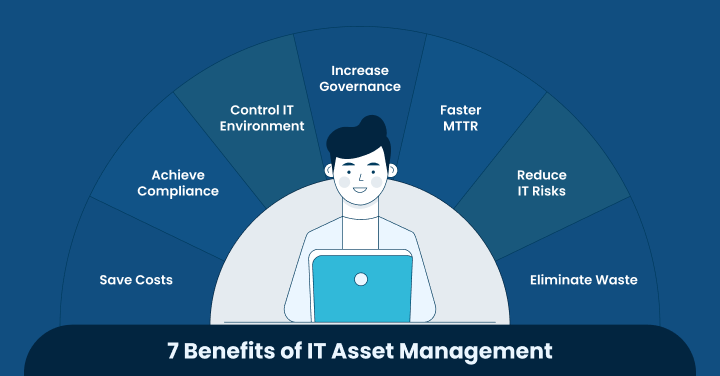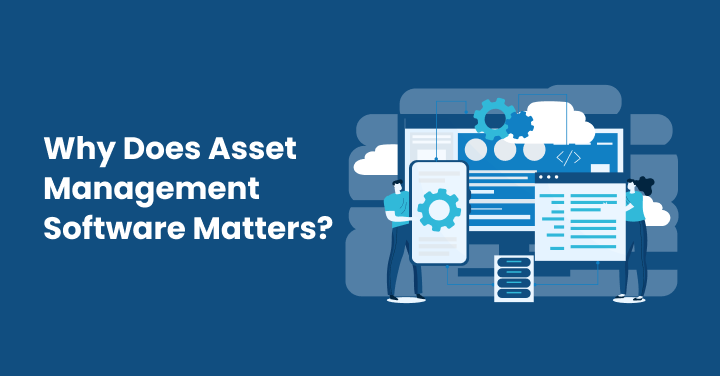Introduction
Managing software licensing is very important for businesses that use modern IT tools. If not done right, it can cause compliance issues, overspending, and waste resources. Good software usage helps reduce security risks and legal problems.
Whether you use on-premises applications or cloud-based solutions, having clear plans for effective software license management is crucial. In this guide, you will find applicable practices and essential insights. These will help you avoid costly mistakes, make the most of your software investments, and keep your operations running smoothly.
Understanding Software License Management
Effective license management is important for keeping operations running smoothly. It means tracking licenses, following the rules, and making the best use of software. This helps your organization avoid legal issues and financial losses due to license misuse.
You can ensure smooth IT operations by combining license agreements with careful management of both SaaS tools and traditional software. Whether you are setting up an inventory or automating license renewals, knowing about software license management within the framework of it asset management helps your business meet IT goals and stay compliant. Let’s look closer at what it means and why it’s important.
Definition and Importance of Software License Management
Software license management is the careful tracking of software agreements in a business, particularly regarding software applications. It helps to follow the rules set by vendors and improves license usage to save money. This process includes different kinds of licenses, like perpetual, subscription-based, and SaaS solutions.
Strong license compliance is essential. It helps avoid legal issues, stops operational stops, and prevents wasting money on unused or extra licenses. For example, not following compliance can lead to fines and surprise audits, harming vendor relationships.
Also, having sound management systems means better connection between IT needs and business needs. By keeping track of agreements and checking actual software usage closely, companies can become more open and help the IT team make better choices. This helps create a clear and cost-saving way to approach software licensing.
Key Objectives of Effective License Management
The main goal of effective license management is to improve operational efficiency, reduce risks, and save money. By keeping all software in one place, businesses can see their purchase histories and simplify software usage. This helps avoid wasting licenses.
Another goal is cost savings related to software needs. This happens when companies remove unused or extra licenses. For example, finding underused SaaS apps lets organizations transfer licenses to areas that need them more, which cuts extra spending.
Finally, staying license-compliant protects businesses from legal risks. It ensures they follow agreements with software vendors closely, reducing weaknesses and building trust. Together, these goals make IT management easier and help support strategic growth.
Key Software License Management Best Practices
Good software license management practices can improve compliance and smooth operations. Regular reviews of license agreements help organizations stay within their software license usage limits. This process also helps find unused licenses or risks related to unauthorized software.
Additionally, having a special management system to keep track of licenses and expiration dates helps maintain a clear software inventory. This proactive approach can save money by preventing costly penalties. It also leads to better software investments. Ultimately, this helps use licenses wisely and lowers overall software spending.
1. Establish a Centralized Inventory
Organizing a software inventory in a central system is key for smooth operations. Instead of handling scattered records, putting all software assets in one place gives you a clear view of the licenses you bought and how they are used.
Besides lessening the workload, a single asset management system can spot gaps and misuses immediately. This helps the IT team use resources better and quickly determine when renewals are needed.
Also, keeping track of expiration dates and upgrades is easy with a central inventory. Businesses can match users’ needs with their goals, staying compliant and reducing the risks of wasting resources or spending too much.
2. Maintain Accurate Records and Documentation
Keeping accurate records is very important for good license tracking. Using a management tool to record agreements and installation info makes things easier and reduces mistakes from human error.
Also, being precise is key. Old or missing records can cause license compliance problems and extra costs. Businesses can avoid fines by keeping precise details about vendor terms and expiration dates.
A clear way to document helps organizations easily manage audits or renewal talks. When records are organized and updated often, decision-making improves. This helps you match software investments with future needs and budgets.
3. Understand Your License Agreements Thoroughly
Misunderstanding the details of software license agreements, including public domain licenses, can cause expensive problems. Businesses need to understand the usage rules to avoid breaking the law entirely.
This means looking at sections explaining how many users are allowed, what software usage is permitted, and the upgrade rules. Attention to these details helps avoid surprises or risks and maintains good relationships with vendors.
Also, it’s essential to stay up-to-date with changes in license agreements. Vendors often change their policies. By checking these changes, your IT team can ensure each contract meets current needs without breaking the rules or spending too much.
4. Regularly Audit Your Software Usage
Conducting regular checks on software usage is very important. It helps create transparency and reduce risks. These checks show how software is actually being used. They also help businesses find licenses that are not needed or are not used much.
Also, looking at purchase records and usage data helps companies spot differences. This way, they can use their licenses better. These audits help reduce waste and stop wasting money on software that isn’t being used.
By doing audits, companies boost license compliance. They can find security problems and get ready for vendor checks. This helps keep operations running smoothly while also maintaining legal and financial safety in place.
5. Implement Access Controls and User Management
Unauthorized software usage can lead to compliance problems and additional security risks. Strict access controls can help monitor which users use certain tools, ensuring accountability and helping prevent breaches.
At the same time, businesses need a strong user management system. This system should limit access when employees leave. This step prevents former workers from misusing sensitive tools or data, greatly reducing risks.
Finally, using role-based access control matches permissions to job needs. This reduces unnecessary usage and encourages productivity. Such controls help keep your IT system safe from possible internal issues.
6. Automate Where Possible
Automation is essential for software licensing management. It helps reduce manual work and makes operations more efficient. You can avoid mistakes with old methods by using software tools and management software to track licenses.
For example, automated tools can monitor expiration dates, send out renewal reminders, and ensure users follow license agreements. These features help reduce the risks of compliance and late renewals without requiring human intervention.
Automatic audits of actual usage also improve decision-making. They provide real-time information about software use and help allocate resources wisely. These automation methods help businesses achieve better cost savings and increased efficiency.
7. Stay Updated on Software Changes and Vendor Policies
Vendors often change their pricing and licensing rules, which can lead to compliance risks if businesses are not careful. By keeping up with software changes, companies can avoid surprises and ensure their needs fit with the new rules.
Also, being aware of the latest vendor updates helps when renegotiating contracts or stopping unnecessary licenses. This can help prevent overspending and lower the chances of keeping tools they do not need for a long time.
Regularly checking vendor policies allows companies to prepare for upcoming changes. It makes their processes run smoother and keeps their license inventory aligned and effective.
8. Plan for Software Retirement and Disposal
Retired or unused licenses should not be left unused. Good software retirement plans stop unauthorized access and keep things following the rules. Using a planned approach helps you understand contract endings and their costs.
When removing software, consider environmental issues and follow data privacy laws. Safely removing old software reduces the chance of data breaches.
This active plan also helps businesses review their software regularly. It cuts long-term costs linked to unused software, letting companies to manage their resources better for future projects.
9. Educate Employees on Software Usage Policies
A knowledgeable workforce is key to successfully enforcing software usage rules. Teaching employees about compliance requirements lowers the chances of unauthorized access and mistakes with license use.
Regular training programs can help staff understand the risks of mishandling software assets. This creates a culture of responsibility and openness in the organization.
These actions lessen the financial burden of fines and improve productivity. They do this by promoting compliance and better choices among users. Educating employees is essential for effective license management.
10. Establish Clear Roles and Responsibilities
Assigning clear roles helps hold software asset management accountable. Having someone in charge, like an IT coordinator or a department leader, makes it easier to oversee how licenses are bought, used, and renewed.
Defined responsibilities reduce confusion and ensure that all rules are followed. This supports compliance and helps teams work better together.
In the end, clearly defined roles connect business goals with daily tasks. Being accountable helps your business run smoothly and reduces risks related to software license mismanagement.
Conclusion
Effective software license management is essential for software license compliance in any organization. It helps optimize software investments and reduce compliance risks. To do this, companies can use best practices. These include keeping a centralized inventory, regularly auditing software usage, and teaching employees about usage policies. By following these steps, businesses can increase compliance, boost productivity, and cut costs. It is also necessary to stay updated on software and vendor policies as technology changes. Using these strategies will help your organization manage software licenses smartly and lastingly. For personalized help improving your software license management, please book a free consultation with our experts.
FAQs:
Software license management, through a software license management tool, ensures that companies follow the rules of their software licenses. It tracks software assets and helps users use them better, leading to better operational efficiency. It also stops unauthorized access and cuts down on extra fees or audits, allowing businesses to save money by using their software properly.
Success in managing software licenses can be checked using KPIs like compliance rates, reducing unused licenses, saving costs, and ensuring correct renewals. Real-time measurement tools help give useful information about following the rules and improving purchased licenses.
The benefits include better cost savings, stricter licensing rules, smoother operations, and lower security risks. Good processes help companies see clearly, allowing them to match their software investments more effectively with their current and future needs.






